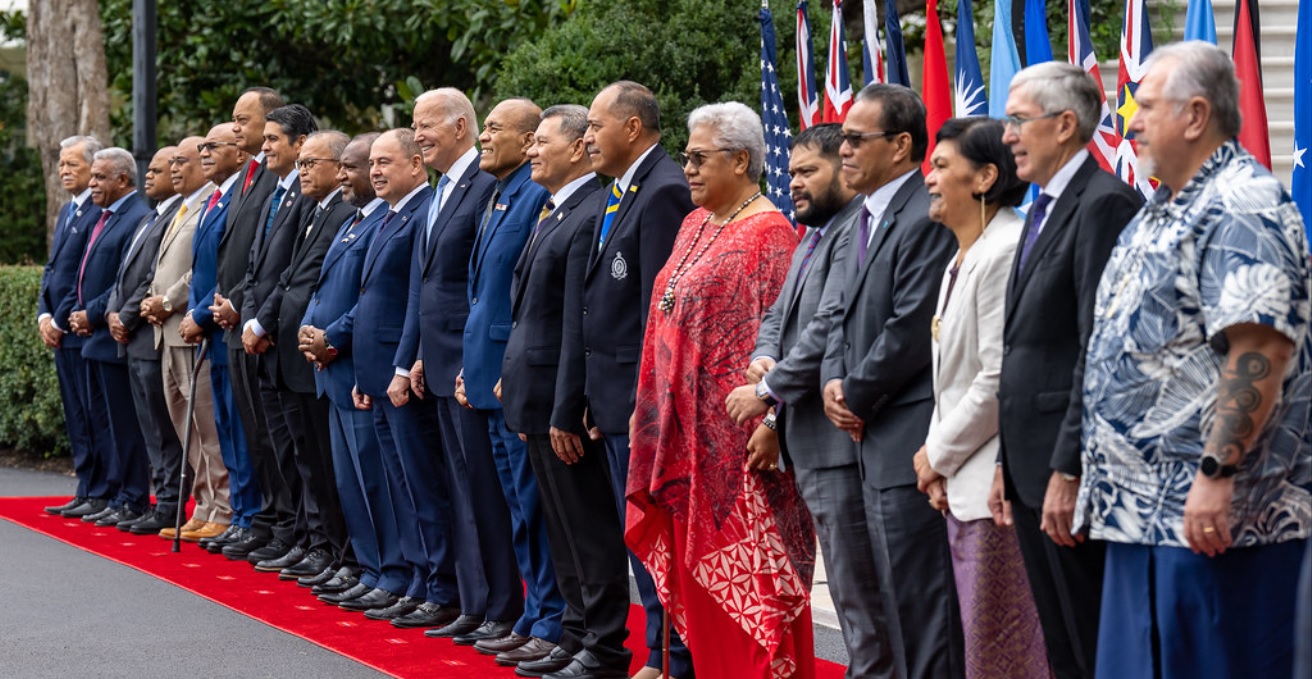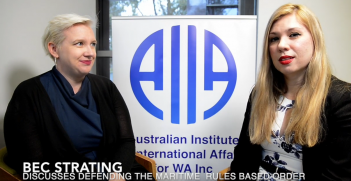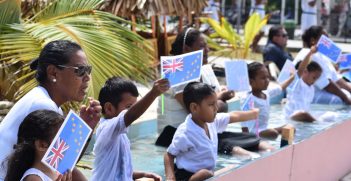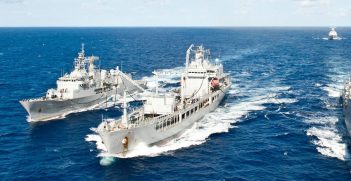Has Biden Summitry Won a Privileged Seat in Pacific Affairs?

The United States (US) has a strong institutional presence among Pacific Island Countries, dating back many years. However, while new promises of engagement with the region are many, the search for implementation is still ongoing.
When President Joe Biden seized the opportunity of the annual UN General Assembly session to host the Pacific Islands leaders for a second summit in a year at the White House, there was a subtle but potentially important name change for the meeting.
The 2022 “US-Pacific Island Country Summit” was rebadged in 2023 as the “US-Pacific Islands Forum Leaders’ Summit.” The significance of the name change did not attract much notice at the time, but it appears to express an American desire to gain a quasi-formal relationship with the region’s premier political body, the Pacific Island Forum (PIF).
Billed by the media as a “charm offensive” to counter Chinese influence, the Biden summitry has placed significant emphasis on the PIF’s centrality to the regional architecture in belated attempts to refurbish and upgrade relations with a region put on the policy backburner at the end of the Cold War.
A new American sensitivity to Pacific Island concerns, such as in the Partners in the Blue Pacific initiative launched a few months before the first White House summit, the endorsement of the Pacific Islands Forum’s 2050 strategy for the Blue Pacific continent, and the promise of substantial new money to the PIF’s Island members, are welcome expressions of US intentions.
Nevertheless, it can be questioned as to how fully the desire to frame a closer connection with the region through the PIF will be changed by the summitry initiative. Most of the Island leadership are very wary of being dragged overtly into a geo-strategic tussle over influence unwilling to have their acceptance of US support transactionally tied to broader anti-China security objectives.
One criticism aimed at the earlier 2022 summit Declaration on U.S.-Pacific Partnership was directed at its inadequacy as a means to establish some level of a formal agreement between the PIF as a body and the US government. PIF procedures require unanimous support for important decisions.
This complaint was addressed by the inclusion of all PIF members in the second summit. Four island PIF members were missing from the 2022 summit – Kiribati and Niue did not attend while Australia and New Zealand were not included. In 2023, New Zealand was represented by Foreign Minister Nanaia Mahuta and Australia by its newly minted Special Envoy for the Pacific and Regional Affairs, Ewen McDonald.
As an intergovernmental organisation (IGO), the PIF does have the capacity to enter into treaty arrangements with individual states. The PIF acquired formal IGO status in August 2021 when Fiji completed the last ratification needed to bring the 2005 treaty into force.
Notwithstanding the presence of all PIF members, the 2023 Statement on Reaffirming US-Pacific Partnership has not changed the formal relationship between the PIF and the US any more than Japanese and Korean summits with all PIF members have. Essentially, its purpose is a political commitment to pursue agreed aims within a shared vision of what is desirable.
An unintended sidebar for the “charm offensive” argument that Biden’s summitry could win a privileged seat in PIF is the serious disadvantage it exposes for the PRC in any attempt to similarly formalise relations with the PIF. Taiwan has four allies – Marshalls, Nauru, Palau, and Tuvalu – among the PIF membership.
In fact, PIF decisions are made through the organisation’s established procedures rather than at ad hoc summits convened by non-PIF states. This was mostly clearly demonstrated when Samoa’s Prime Minister Fiamē Mata’afa helped to sink China’s 2022 proposed regional security agreement, arguing that it needed to be considered by the appropriate internal PIF processes.
The 2023 summit agreement, nonetheless, did confer a potentially substantial political gain for the US. The PIF members agreed to hold “the next US – Pacific Islands Forum Summit in 2025” with an intension “to hold biennial political engagements thereafter.”
Biennial leaders’ meetings between the PIF states and the US is a significant advance for Washington. The commitment places the US favourably alongside states like China, Japan and India that have had multiple but less frequent summits with the PIF leaders.
However, the frequency may prove problematic for several reasons. Perhaps the key one will be to find ways to add value to a special relationship with the Forum.
None of the other non-PIF states have the access to the Pacific Island regional architecture that the US has. The US is a founding member of the SPC and of SPREP as well as having created in 1980 the Pacific Islands Development Program (PIDP), headquartered at the East-West Center in Honolulu. Through these agencies, the US already has direct involvement in regular ministerial-level meetings that the 2023 summit statement identifies as an objective to advance the US-Pacific Partnership.
Although it has a seat at the Council of Regional Organisations in the Pacific (CROP), the inter-organisational coordinating mechanism for the entire regional system, the PIDP has been underrated heretofore as a vehicle for US-Pacific relations. The PIDP has held a dozen meetings of the Pacific Islands Conference of Leaders since it was founded in 1980, any one of which could have been a US-Pacific Islands summit had an American president chosen to host one.
Thus, in addition to its 1989 inclusion in the first cohort of post-Forum Dialogue Partners, the US already has a significant number of other avenues, virtually none of which are available to China, to help promote regional objectives without seeking a special and preferential ongoing relationship with the PIF.
The projected closer ties to the PIF membership may not confer any official status within the Forum but formalised biennial summits with PIF will have consequences and not all may be positive. Particularly challenging may be refreshing the summit agenda.
Solomon Islands’ Prime Minister Manasseh Sogavare was pointed in his critique as to why he did not attend the 2023 summit. He wanted to avoid a “lecture” and because the US had been short on fulfilling previous promises.
Beyond having to present regular updates on the implementation of the US-Pacific Partnership, biennial summits will risk being highjacked by the grievance of individual PIF members. Slow US progress on the renewal of compacts of free association agreements with the FSM, Marshalls, and Palau became a regional issue at the 2022 summit with the Marshalls still unresolved in 2023.
As much as the US sees advantage in a special relationship with the PIF, it is not putting all its effort into improved multilateral ties. Coterminously with its summitry initiative, the US has greatly expanded its diplomatic presence in the region.
Washington has opened or soon will open new embassies in Kiribati, Solomon Islands, Tonga, and Vanuatu in addition to giving recognition to Cook Islands and Niue as “independent, sovereign nations.” The last will bring these nations in line diplomatically with the other independent PIF island members.
With a total of 10 missions in the 14 eligible PIF island member states, the US will be the most well-represented country in the region after Australia which has resident representation in all 14. The increase in US missions means it overtakes New Zealand with nine and the PRC which has eight.
The US-Pacific Islands Forum Leaders’ Summit may yet appear in history’s rear vision mirror as an inflection point in US-Pacific regional relations but for now the jury is still out and is likely to remain so for some time.
Richard Herr OAM is a life member of the AIIA and inter alia a former President of the Tasmanian Branch. He has served as a consultant on various aspects of Pacific Island a regional architecture for four decades.
This article is published under a Creative Commons Licence and may be republished with attribution.





